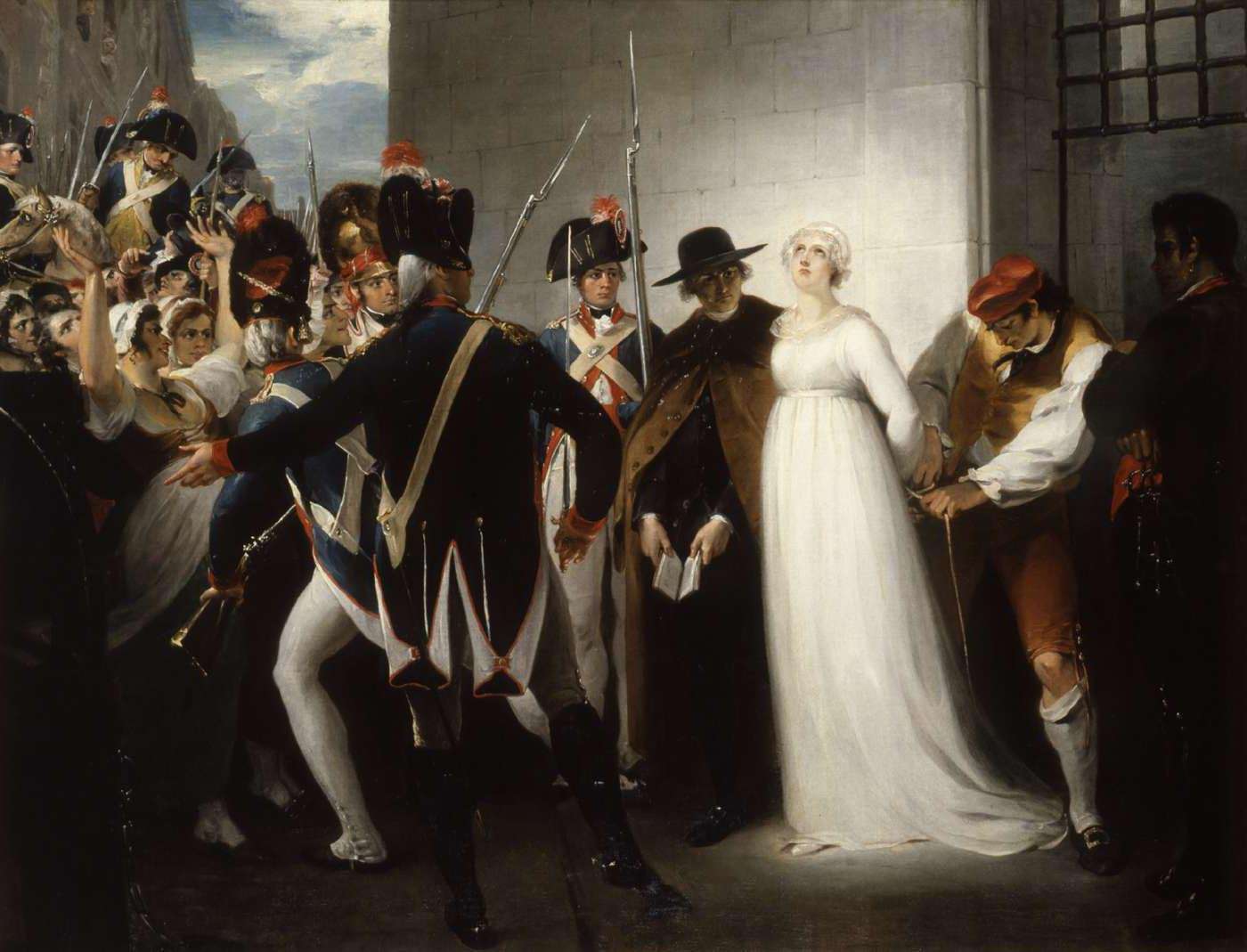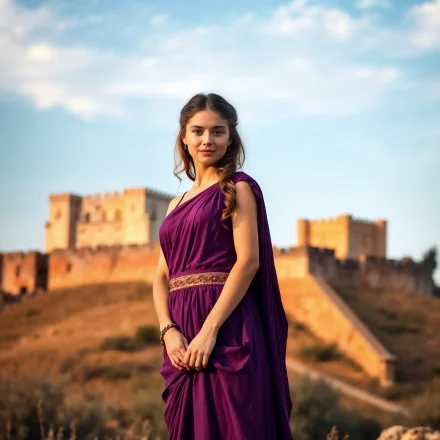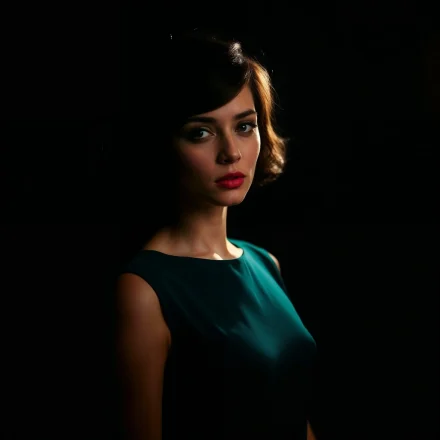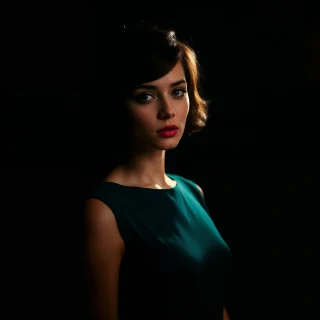Table of Contents
The French Revolution (1789-1799) was a period marked by radical social and political upheaval, which profoundly influenced the artistic landscape of France. Artists responded to the revolutionary ideals of liberty, equality, and fraternity, creating works that not only reflected the tumultuous events of the time but also served as powerful symbols of change. This article explores the evolution of art during this era, focusing on key movements, prominent artists, and significant artworks.
Neoclassicism: The Artistic Response to Revolution
Influence of Classical AntiquityAs the Revolution unfolded, there was a notable shift from the ornate Rococo style to Neoclassicism, which drew inspiration from ancient Greece and Rome. This movement was characterized by its emphasis on moral virtue, civic duty, and the heroic past. Artists sought to convey serious themes through a restrained aesthetic that contrasted sharply with the frivolity of Rococo art
15.Jacques-Louis David: The Revolutionary PainterJacques-Louis David emerged as a leading figure in Neoclassicism and played a crucial role in shaping revolutionary art. His works often served as propaganda for revolutionary ideals. For instance, “The Death of Marat” (1793) depicts the assassination of revolutionary leader Jean-Paul Marat, portraying him as a martyr for the cause24. David’s ability to infuse his subjects with emotional depth and moral clarity made his paintings powerful tools for political expression.
The Shift Toward Romanticism
As the Revolution progressed, artists began to explore Romanticism, which emphasized individual creativity and emotional expression. This shift was partly a reaction against the rigid rationalism of Neoclassicism. Romantic artists sought to capture the spirit of the times through dramatic compositions and vivid imagery
12.Eugène Delacroix: A Symbol of FreedomEugène Delacroix’s “Liberty Leading the People” (1830), although created after the Revolution, encapsulates its spirit. The painting portrays Liberty as a dynamic figure leading a diverse group of revolutionaries, symbolizing hope and collective struggle against oppression24. Delacroix’s work reflects not only the ideals of the Revolution but also its ongoing legacy in subsequent uprisings.
The Role of Women in Revolutionary Art
Women played a significant role in both the Revolution itself and its artistic representation. Many artworks depicted women as symbols of liberty and national identity. For example, figures like Olympe de Gouges became emblematic of women’s rights during this period
3. Paintings often featured female allegories representing freedom or justice, reinforcing their importance in revolutionary narratives.
Iconic Works and Their Significance
Several iconic artworks emerged during this period that captured the essence of the Revolution:
- “The Tennis Court Oath” by Jacques-Louis David: This painting illustrates a pivotal moment when members of the Third Estate vowed not to disband until a new constitution was established. It symbolizes unity and determination among revolutionaries24.
- “The Execution of Louis XVI” by H. de la Charlerie: This artwork depicts King Louis XVI’s execution, capturing the tension and drama surrounding this historic event. It reflects the radical shift in power dynamics brought about by the Revolution24.
- “The Storming of the Bastille” by Jean-Baptiste Lallemand: This painting commemorates one of the Revolution’s most iconic events, symbolizing the people’s uprising against tyranny4.
Conclusion: A Legacy of Transformation
The art produced during the French Revolution serves as a powerful testament to a society in flux. From Neoclassicism’s moral rigor to Romanticism’s emotional depth, artists navigated complex political landscapes while striving to capture their era’s spirit. The legacy of this artistic period continues to resonate today, reflecting themes of freedom, sacrifice, and collective identity that remain relevant in contemporary discourse.The revolutionary era not only transformed France politically but also left an indelible mark on its cultural heritage through art that continues to inspire and provoke thought about liberty and justice.














Нужно собрать информацию о человеке ? Этот бот предоставит детальный отчет мгновенно.
Используйте уникальные алгоритмы для поиска публичных записей в открытых источниках.
Выясните место работы или интересы через автоматизированный скан с гарантией точности .
глаз бога телеграмм официальный бот
Бот работает с соблюдением GDPR, используя только открытые данные .
Закажите расширенный отчет с историей аккаунтов и списком связей.
Доверьтесь проверенному решению для исследований — точность гарантирована!
Matchmaking services provide a innovative approach to meet people globally, combining intuitive tools like profile galleries and compatibility criteria.
Key elements include secure messaging , geolocation tracking , and personalized profiles to enhance interactions .
Advanced algorithms analyze behavioral patterns to suggest compatible matches, while account verification ensure trustworthiness.
https://live8.us/dating/a-celebration-of-natural-desire-and-fertility/
Many platforms offer freemium models with exclusive benefits , such as unlimited swipes , alongside profile performance analytics.
Whether seeking casual chats , these sites adapt to user goals, leveraging community-driven networks to foster meaningful bonds.
91nqwq
Unlock exclusive rewards with every referral—apply to our affiliate program now! https://shorturl.fm/f1mCu
Join our affiliate program and start earning commissions today—sign up now! https://shorturl.fm/WpCdE
Join our affiliate community and earn more—register now! https://shorturl.fm/f1Ejd
Share your link, earn rewards—sign up for our affiliate program! https://shorturl.fm/pU1OD
Partner with us and earn recurring commissions—join the affiliate program! https://shorturl.fm/lBH46
Promote our brand and watch your income grow—join today! https://shorturl.fm/CWeJ7
Boost your income effortlessly—join our affiliate network now! https://shorturl.fm/s3uAs
Start profiting from your traffic—sign up today! https://shorturl.fm/lLD8I
Promote, refer, earn—join our affiliate program now! https://shorturl.fm/ejdaK
Refer friends and colleagues—get paid for every signup! https://shorturl.fm/5LzWd
Monetize your influence—become an affiliate today! https://shorturl.fm/i6365
Promote our products and earn real money—apply today! https://shorturl.fm/ipkPI
Share your link and rake in rewards—join our affiliate team! https://shorturl.fm/BaW5c
Sign up for our affiliate program and watch your earnings grow! https://shorturl.fm/IB2UQ
Partner with us for high-paying affiliate deals—join now! https://shorturl.fm/p7Fwg
Grow your income stream—apply to our affiliate program today! https://shorturl.fm/ASKOA
Start earning on every sale—become our affiliate partner today! https://shorturl.fm/au2wm
Share our link, earn real money—signup for our affiliate program! https://shorturl.fm/vwymY
Share your link, earn rewards—sign up for our affiliate program! https://shorturl.fm/3JJfe
Share your link and rake in rewards—join our affiliate team! https://shorturl.fm/lDgLj
Turn your audience into earnings—become an affiliate partner today! https://shorturl.fm/kZYTe
Drive sales, collect commissions—join our affiliate team! https://shorturl.fm/DGYv7
Drive sales, collect commissions—join our affiliate team! https://shorturl.fm/DGYv7
Promote our brand and get paid—enroll in our affiliate program! https://shorturl.fm/SKzZ1
Be rewarded for every click—join our affiliate program today! https://shorturl.fm/GqFlH
Monetize your audience—become an affiliate partner now! https://shorturl.fm/POHQs
Monetize your traffic instantly—enroll in our affiliate network! https://shorturl.fm/Mfdgr
Join our affiliate program today and earn generous commissions! https://shorturl.fm/K9KpE
Your influence, your income—join our affiliate network today! https://shorturl.fm/uiB4G
Apply now and receive dedicated support for affiliates! https://shorturl.fm/naxbL
Monetize your influence—become an affiliate today! https://shorturl.fm/v7HC3
Turn referrals into revenue—sign up for our affiliate program today! https://shorturl.fm/aslKd
Share our products, reap the rewards—apply to our affiliate program! https://shorturl.fm/qQXy2
Monetize your audience—become an affiliate partner now! https://shorturl.fm/QoUsW
Share our products, reap the rewards—apply to our affiliate program! https://shorturl.fm/VMUrs
Earn passive income on autopilot—become our affiliate! https://shorturl.fm/K510y
Refer friends and colleagues—get paid for every signup! https://shorturl.fm/vermg
Turn your traffic into cash—join our affiliate program! https://shorturl.fm/GcfOB
Start earning every time someone clicks—join now! https://shorturl.fm/2cam4
https://shorturl.fm/s9eqz
https://shorturl.fm/DCQgy
https://shorturl.fm/UDnQj
https://shorturl.fm/gUgcb
https://shorturl.fm/G9t6h
https://shorturl.fm/TNI4U
https://shorturl.fm/AsVKX
https://shorturl.fm/JyUpt
https://shorturl.fm/IIVgK
https://shorturl.fm/o1LTN
https://shorturl.fm/TAfm1
https://shorturl.fm/5dy6t
https://shorturl.fm/NtWwr
https://shorturl.fm/AwDMY
https://shorturl.fm/cHB2x
https://shorturl.fm/kTGhD
https://shorturl.fm/NFryl
https://shorturl.fm/38nCM
https://shorturl.fm/iQ6Hn
https://shorturl.fm/oUPCZ
https://shorturl.fm/DNUnh
https://shorturl.fm/9Rha5
https://shorturl.fm/goDYb
https://shorturl.fm/dvvA0
https://shorturl.fm/MTWPQ
https://shorturl.fm/MPfYk
https://shorturl.fm/JjsrX
https://shorturl.fm/X349j
https://shorturl.fm/Xlzqo
https://shorturl.fm/ZHeEd
https://shorturl.fm/hxvvy
https://shorturl.fm/ALAG9
https://shorturl.fm/643Zb
https://shorturl.fm/n2uF4
https://shorturl.fm/lZ3vk
https://shorturl.fm/MypLT
https://shorturl.fm/lceG8
https://shorturl.fm/kFo3U
https://shorturl.fm/G5NXC
https://shorturl.fm/vPunI
https://shorturl.fm/z8Pc9
https://shorturl.fm/H1oBd
https://shorturl.fm/8WV1c
https://shorturl.fm/xbdHL
https://shorturl.fm/Iy40W
https://shorturl.fm/bhTS1
https://shorturl.fm/KwpEn
https://shorturl.fm/ZxBcD
https://shorturl.fm/W0SUZ
https://shorturl.fm/zIVwI
https://shorturl.fm/ic8zz
https://shorturl.fm/MwhRr
https://shorturl.fm/7YyUy
https://shorturl.fm/VLDGI